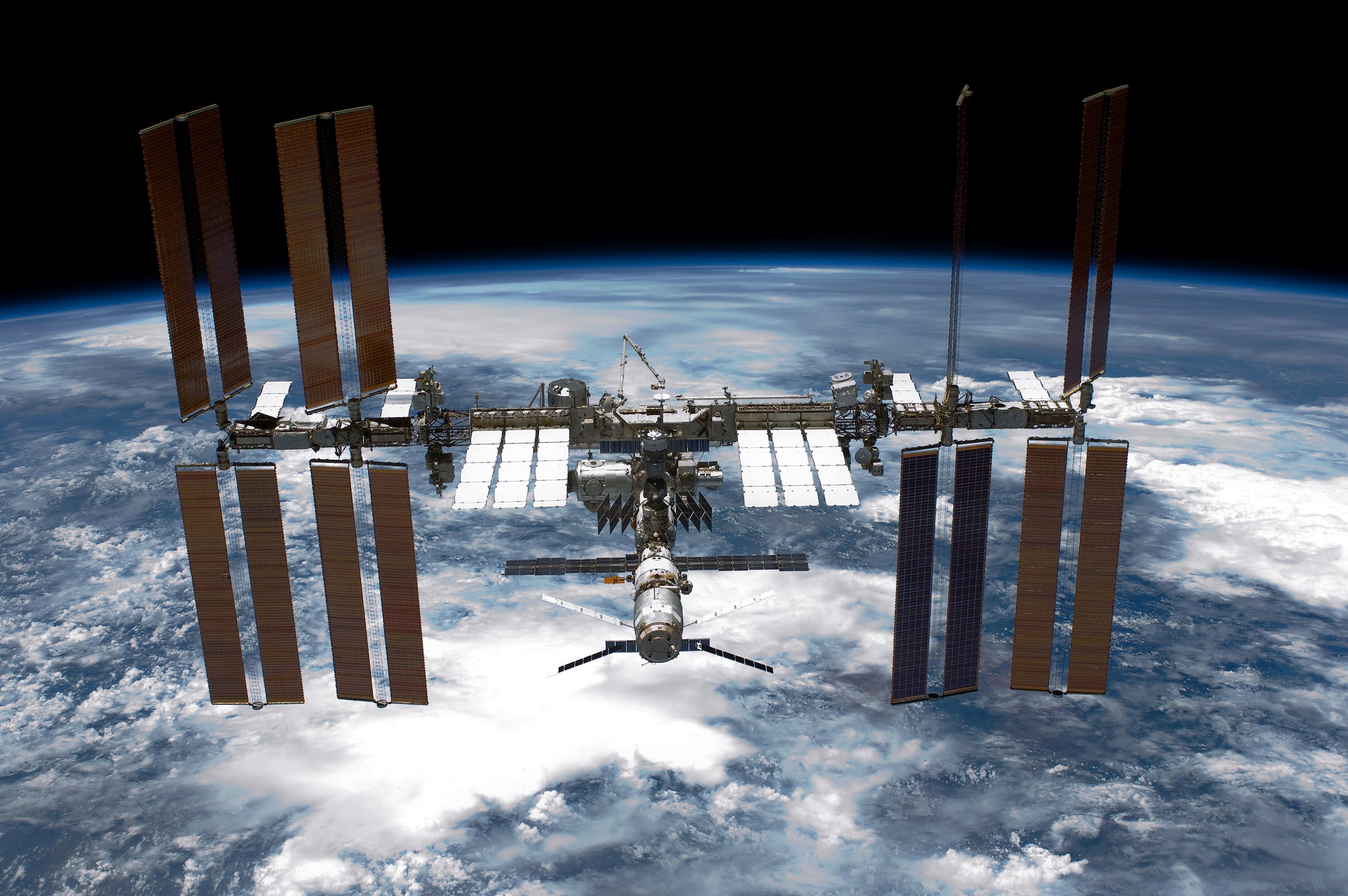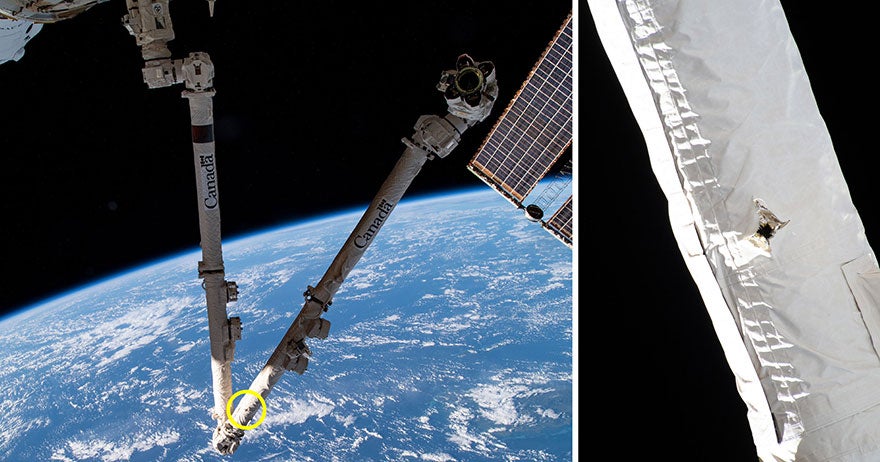Space debris punctures International Space Station’s robotic arm
The debris pierced the thermal blanket but the arm’s performance remains unaffected, according to the Canadian Space Agency

The International Space Station has been hit with a piece of orbital debris, leaving a sizeable hole in its 17 metre-long robotic arm.
Experts from the Canadian Space Agency and Nasa found the puncture during a routine inspection of Canadarm2. The arm performs station maintenance, moves supplies – and even astronauts – and performs “cosmic catches” by grappling visiting crafts and bringing them to the ISS.
The inspection, which took place on 12 May, found that the puncture came from a piece of space debris that was too small to be tracked – which accounts for rock or dust particles to flecks of paint from satellites, the CSA says. Any object the size of a football or larger can be tracked.

“Despite the impact, results of the ongoing analysis indicate that the arm's performance remains unaffected. The damage is limited to a small section of the arm boom and thermal blanket”, the space agency said.
“Canadarm2 is continuing to conduct its planned operations, including hoisting Dextre [a repair robot] into position to replace a faulty power switchbox”.
The issue of space debris has been long-running, and is only going to become a larger issue as humanity sends more crafts into orbit.
There are currently around 200,000 objects between 0.4 and 4 inches, and tens of thousands of objects larger than 4 inches, floating in space according to the United States Space Surveillance Network – but that could be a conservative estimate.
A study presented last month at the European conference on space debris says that the problem has been underestimated, and that the amount of space junk in orbit could, in a worst case scenario, increase 50 times by 2100.
Should two pieces of space debris collide, the result could be a domino effect that could keep humans trapped on Earth.
In order to alleviate this problem, the UK has led the launch of two spacecraft to collect the debris using a magnetic docking system.
Join our commenting forum
Join thought-provoking conversations, follow other Independent readers and see their replies
Comments
Bookmark popover
Removed from bookmarks